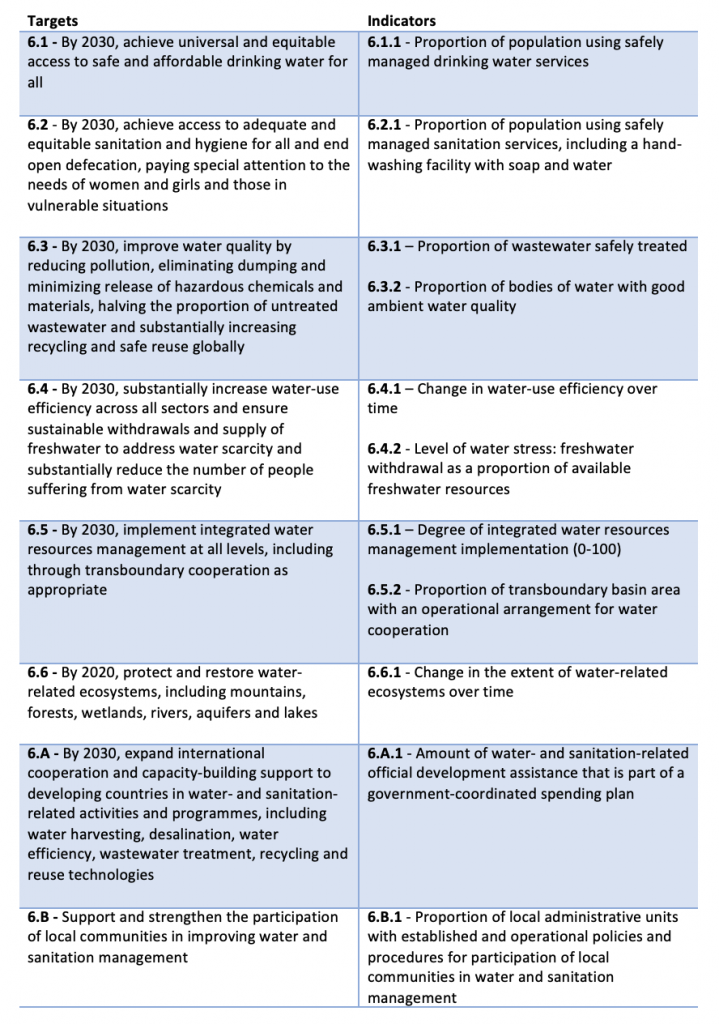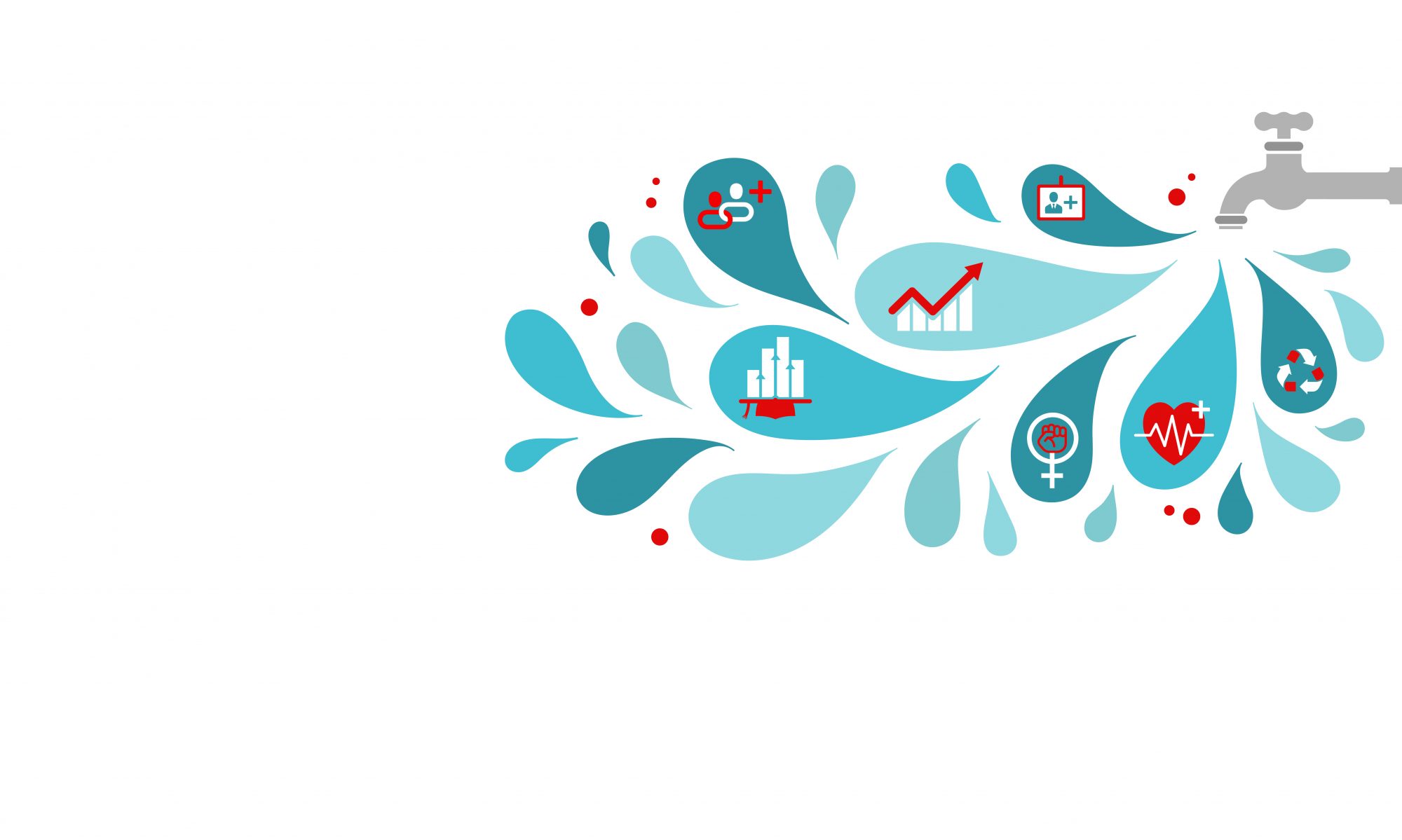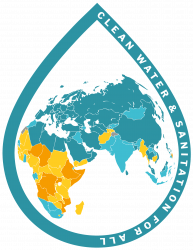The sustainable development goals (SDG) were built on decades of work by countries and the United Nations. 1992 saw the adoption of Agenda 21. Eventually, in 2015 the 17 sustainable development goals were adopted as part of the 2030 Agenda for Sustainable Development at the UN Sustainable Development Summit in New York. These goals outline 17 thematic issues which need to be confronted in order to create a sustainable world for all.
SDG 6, ‘Ensure availability and sustainable management of water and sanitation for all’, is a goal which is to be achieved by 2030. It has multiple targets which need to be achieved for this to materialise along with a series of indicators to identify whether the targets are met.

Progress of SDG 6
There has been continuous progress from when the goal was adopted in 2015, to the current day. Nevertheless, billions of people remain in a situation where they lack safe water for consumption and sanitation. Achieving even basic sanitation services universally, is seeming unlikely, with data suggesting that to do this the annual rate of progress would need to be doubled. Efficiency of use, and management of water resources, is a key factor to addressing the increasing water demand, however, threats to water security and increasing frequency and severity of flood and droughts, are all influenced by climate change.

- 785 million people still lack even a basic drinking water service (>10%)
- 673 million still practicing open defecation (9%)
- 3 billion people without basic handwashing facility (38%)
- 1/3 of primary schools and 1/4 healthcare facilities world-wide lack basic drinking water, sanitation and hygiene services, effecting more than 2 billion people
- 1/3 of countries have medium or high levels of water stress, these levels indicate serious water difficulties in the supply of freshwater.
- 60% of 172 countries unlikely to reach the target of full implementation by 2030
- Only 17 of 153 countries which share transboundary waters, were covered by cooperation in operational in all transboundary basins
- 2% decline in ODA disbursements to the water sector, however ODA commitments to the water sector have jumped by 36%.

